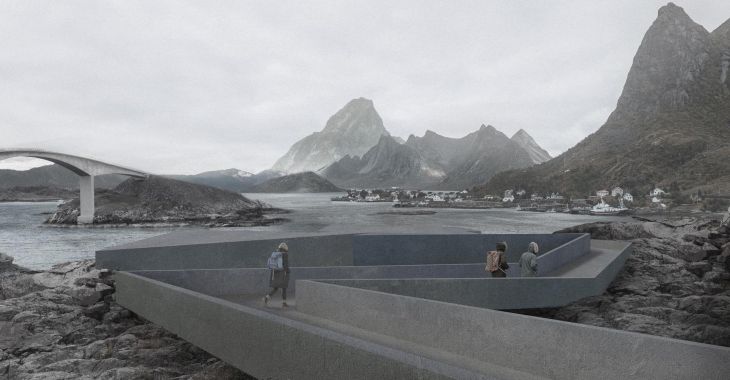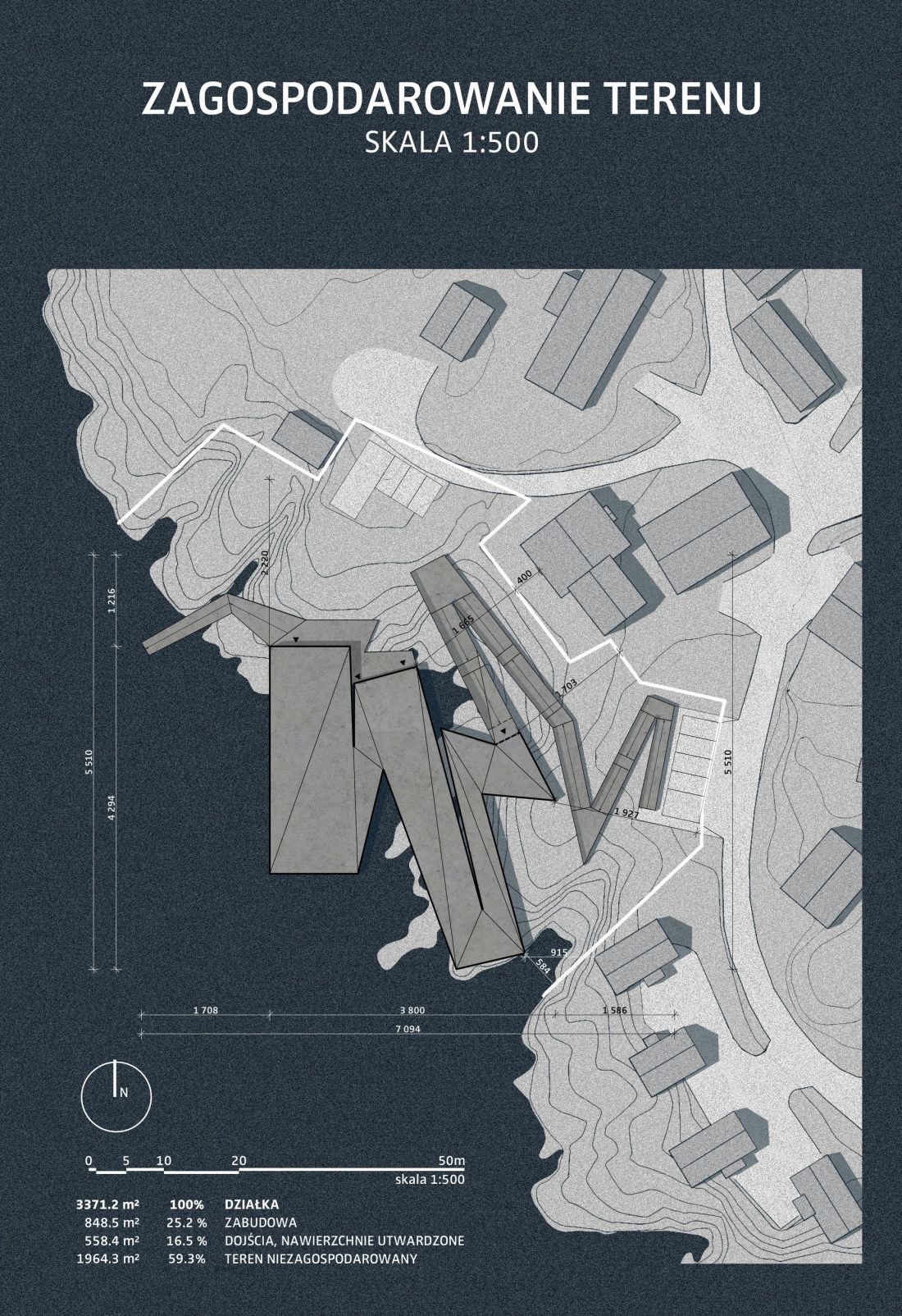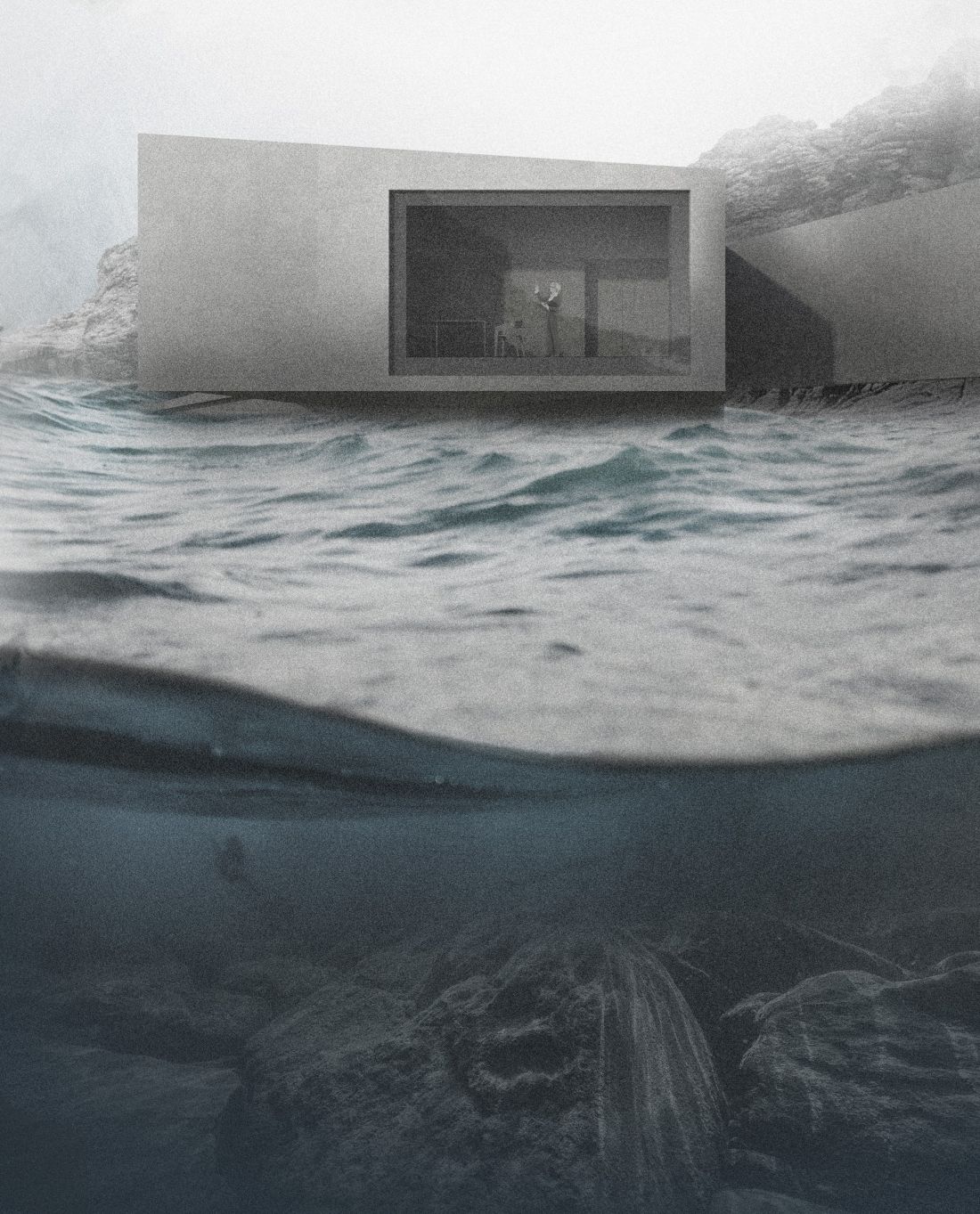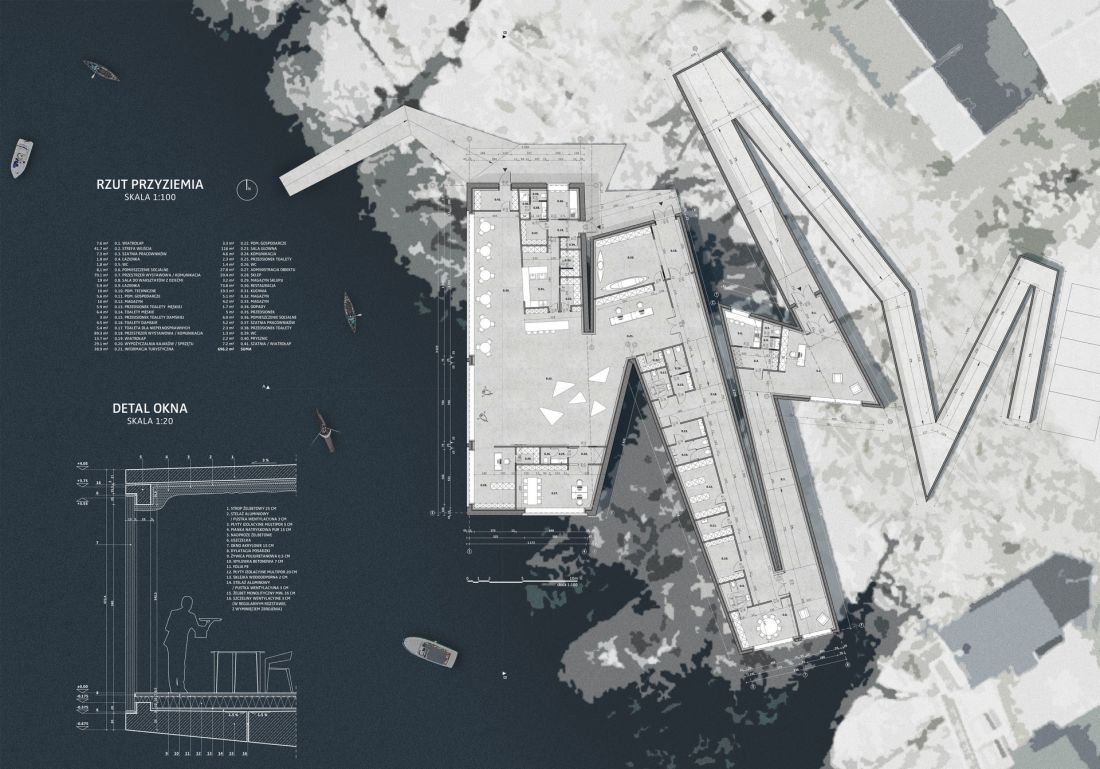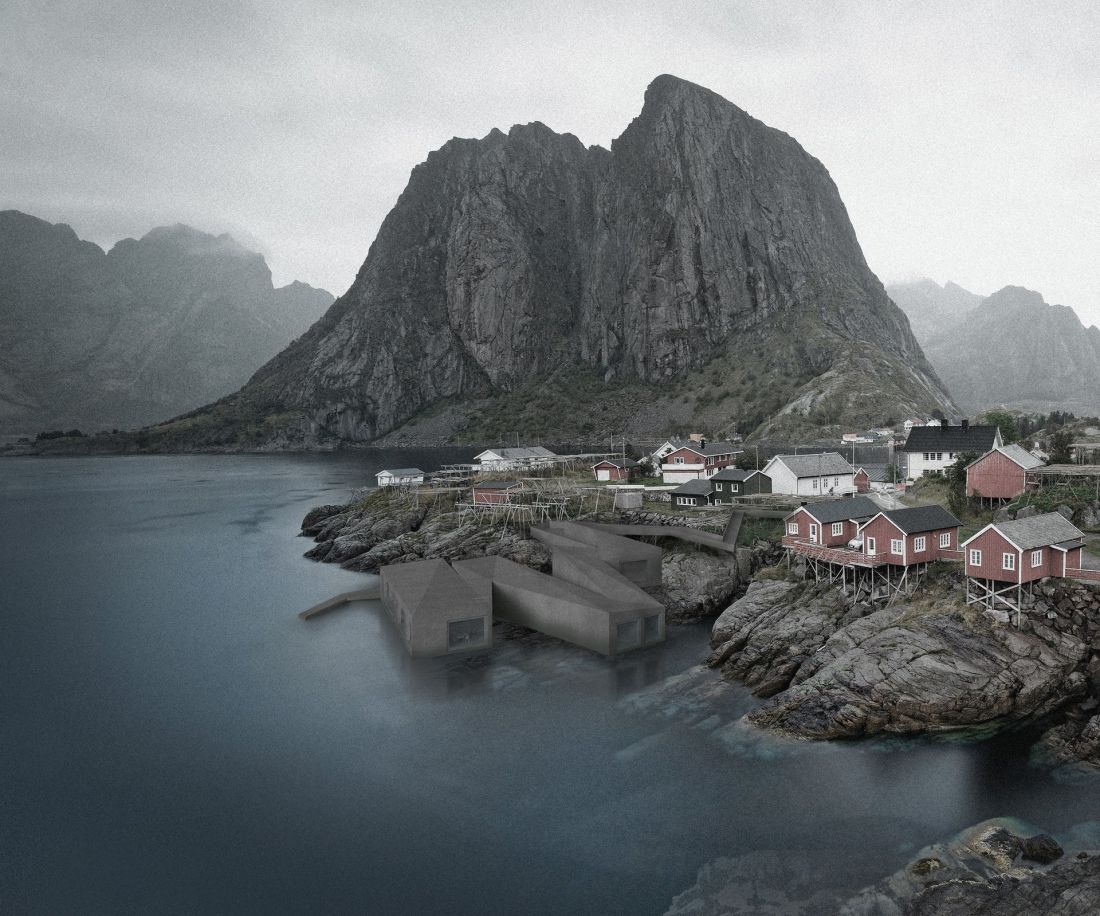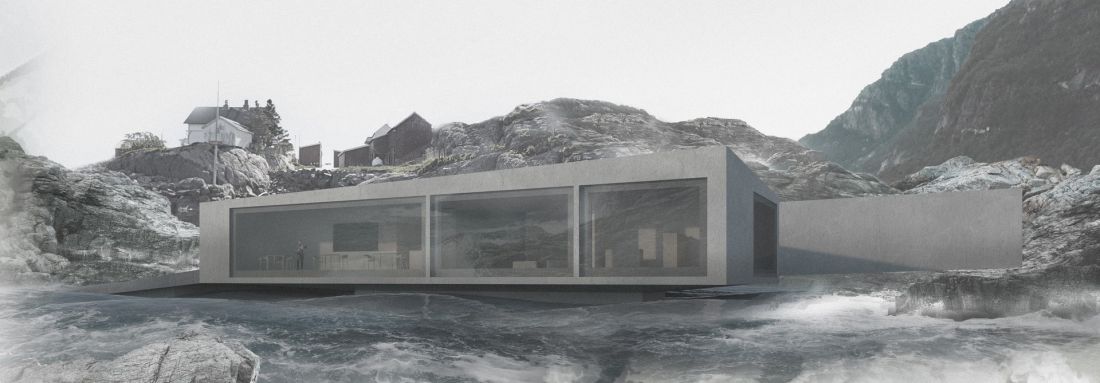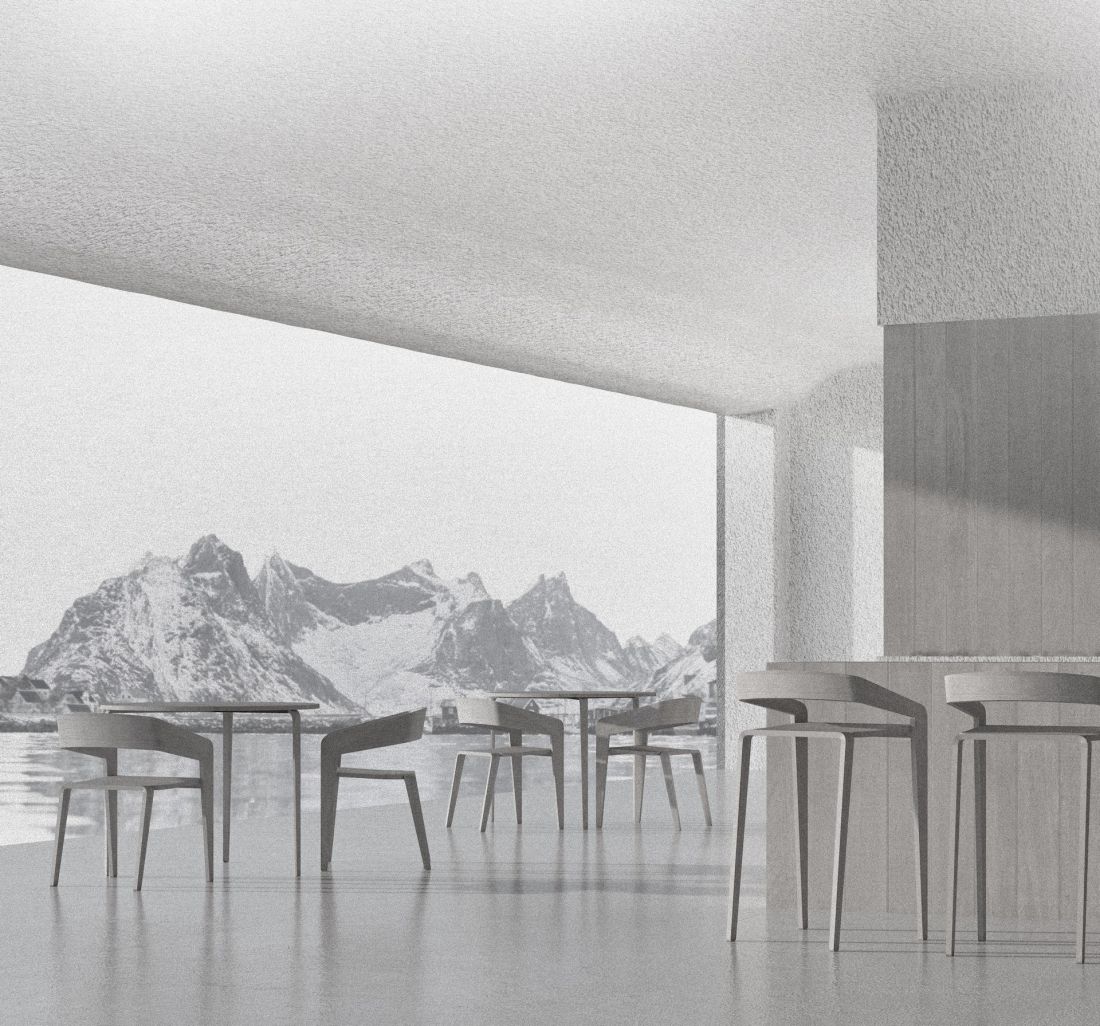Jakub Kondracki proposed the design in his master's thesis a modern tourist center in the Scandinavian fjord region, in the picturesque village of Hamnøya in Lofoten. The author's goal was to design a facility that not only meets the growing demand for tourist attractions in the region, but also fits perfectly into the specific landscape and tradition of the place. The project should be in complete symbiosis with nature while providing modern functional solutions adapted to the climatic and geographical conditions of Norway.
Land development
© Jakub Kondracki
Hamnøya – natural beauty and tradition
Ham Island is a small fishing village in the Lofoten archipelago, known for its exceptional scenic beauty. It is a place dominated by a rugged landscape of rocky fjords and traditional fishing architecture. This pleased the designer of the project, who saw in this combination of the harshness of nature and the warmth of local traditions the perfect basis for a tourist facility. Hamnøya is characterized by its unique architecture, where fishermen's houses covered with colorful shutters contrast with the gray of the mountains and fjords. It is a landscape that has its own characteristics but also challenges – challenging geographical and climatic conditions that presented the designer with a series of difficulties but also with inspiration.
Cross sections
© Jakub Kondracki
Concrete construction in harmony with the surroundings
One of the main goals of the project was to integrate the building into the harsh landscape of the fjords without overwhelming it or causing dissonance. Due to the location of the site on the border between water and land, the building had to withstand extreme weather conditions such as strong waves or high tides. That's why the structure was designed with waterproof concrete, which blends perfectly into the rocky surroundings.
Floor plan
© Jakub Kondracki
By using concrete, which takes on a characteristic gray color over time, the building blends naturally into the landscape. In addition, thanks to the structure of the material and the marine vegetation that begins to settle on the walls, the building acquires an additional level that connects it with nature. The building should not only fulfill a tourist function, but also act as a landscape element and harmonize with the surrounding nature. Its design aims to highlight the character of the fjords and adapt to environmental conditions.
Visualization
© Jakub Kondracki
Zigzag shape
When designing the visitor center, the author could not ignore the challenges of the slope, which is quite steep in this region.As a form of communication, he adopted zigzag paths, which are both a landscape element and a functional part of the architecture. A traffic route running the entire length of the property connects the functional spaces and thus creates continuity. This zigzag shape of the path not only allows easier access to the building, but also avoids the need for stairs, which is important in the context of universal architecture. This ensures full accessibility for people with reduced mobility and creates a space friendly to all users.
Visualization
© Jakub Kondracki
The building was designed to allow comfortable movement between different zones. A path brings users closer to the building and gradually introduces them to its main body, which extends over the entire access path. Exhibition spaces are planned along this path, allowing users to admire various exhibitions while moving around the building.
modern meeting place
Designed by Jakub Kondracki, the tourist center is intended to fulfill a number of functions that serve both tourists and the local community. The facility will include, among other things, an information desk, exhibition areas, a workshop room for children and a rental of water and climbing equipment. On the lowest level, a spacious room is planned with large glass windows so that visitors can enjoy the picturesque landscape of the fjords. This part of the complex is intended to serve as a venue for performances, openings and other cultural events that attract tourists and the local population.
Visualization
© Jakub Kondracki
The designer has also planned a pier that will provide additional access to the building by water, important both in terms of water tourism and for the delivery of fresh produce to the facility's food court. The bridge will also ensure that the center can also be used by people arriving by the water route typical of the fjord region.
Lofoten
The Lofoten, a region in Norway that includes islands such as Hamnøya, is one of the most beautiful and well-known tourist destinations in the world. It attracts millions of tourists/visitors every year who want to explore its remarkable landscapes, fjords, mountains and traditional fishing villages. However, the region is experiencing a gap in its tourism offering – a lack of facilities that can provide comprehensive services and modern amenities to the growing number of visitors.
Visualization
© Jakub Kondracki
The planned tourist center is intended to close this gap. On the one hand, it will provide tourists with important information and attractions, but on the other hand, it will become a place where one can gain a deeper understanding of the culture and history of Lofoten. With a variety of functions such as workshops for children, exhibitions and water sports equipment, the center becomes an attractive point on the tourist map of the region.
